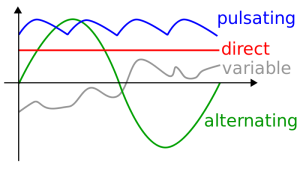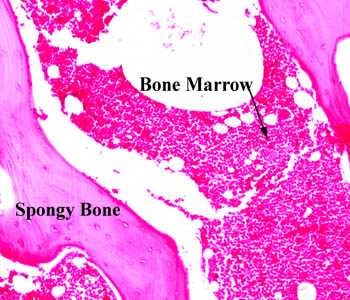This is one of those posts that will go into the back of the indexes since it has no real relevance to our research. However this type of post will be used in any future type of anthropo-morphological or auxological research on asian populations.
I personally am not of the Korean or Vietnamese Ethnicity so I have no subjective biases on the research. I only present what I find and try to interpret the studies in my own way.
I refer to the study “The impact of environment on morphological and physical indexes of Vietnamese and South Korean students” – Authors: Mai Van Hung*, Sunyoung Pak based in Seoul National University in 2007.
The study basically says that if we were to divide groups of people up by the country of their origin, or the country of their ethnic origin, and we averaged out college aged young men and women we would find that South Korean ethnic based people are on average taller than Vietnamese ethnic based people.
Here are the actual numbers that are tabulated.
Height Measurements for South Korean College Students
Based on measuring 916 college aged korean men and 910 college aged korean females. When we refer to the term ‘college age’ we are talking about the age range of 20-25 years old. I personally note that fact that Korean Culture actually adds an extra year of age compared to the way American Society measures age. At the moment that a person is born, the age is counted as 1. Also, almost all South Korean young men who are of able body and in good health are mandated/obligated to serve in the Korean military for 2 years, so this means that Korean men often graduate University at the age of 24-25 while the average American male assuming that he finished his undergraduate degree in the assumed 4 year time graduates usually in the 21-22 year range. If we take into the consideration that many Koreans take a year off from their normal undergraduate years to student abroad in a European, Australian, Canadian, or American University, the average age at which the South Korean men might graduate might be 4 years later than their American counterpart. Of course, now I have digressed too far off the main point.
- Average Height for College Age Korean Men – 174.51 ± 6.15
- Average Height for College Age Korean Women – 161.22 ± 5.18
Height Measurements for Vietnamese College Students
I personally have lived in Seoul, South Korea for the last year for business so I have more knowledge on Korean Culture than the Vietnamese culture. As for the anthropometric measurements of the young adults and college students of the country of Vietnam, I have nothing to say since I just don’t know enough about the culture and the people there, at least from a stature point of view.
- Average Height for College Age Vietnamese Men – 165.76
- Average Height for College Age Vietnamese Women – 155.22
Just like how in the movie “The Wizard of Oz” The wizard named Oz would say “Pay no attention to the man behind the curtain” I would say something similar in this post “Pay no attention to why I decided to post about height statistics of two countries which have almost nothing in common with each other”. It’s just something I do, and I like to collect that type of mostly useless information, often to be used months or even years later in conversation, or scientific discussions.
Is there a method to my madness, and my almost obsessive fixation on average height of different groups of people around the world?
I am not sure. Maybe this is just something that I really enjoy talking about and doing research on.
I am definitely not saying that one group of people is somehow better than another group of people just because they have a larger stature on average. That is completely asinine to make such a stupid claim. I am presenting numbers that represent measured body dimensions.
These are the basic scientific points that these scientists from Seoul National University have made about human growth and height based on environmental factors.
- The amount of habitual physical activity has no effect on body height
- Daily caloric expenditure can be a major determinant of weight.
- Generally the basic anthropometric indexes of the North people are higher than the South people
The scientific explanation on the third claim is based on the old idea that people in regions closer to the equator, where it is hotter, would naturally evolve to have body shapes and sizes where the surface area/body volume ratio is maximized to release internal body heat generated from the millions of chemical reactions that are going on. This means that people who have ethnicities originating from countries closer to the equator would be smaller, based on the fact that as the human body gets taller, their volume increases a geometric rate based on a cubed function while the surface area of the person would increase at a squared function. That is something to be avoided evolutionary for heat releasing causes.
The last interesting facts that are noted are…
- Average male height in Vietnamese and North Korean remains comparatively small at 5 ft 4 in (1.63 m) and 5 ft 5 in (1.65 m) respectively.
- Currently, young North Korean males are actually significantly shorter.
- Average male height in South Koreans are about 3 inches (8 cm) taller than their North Korean counterparts, on average…
A Special Note For People Who Read This Far Into The Post
There is nothing special to take away from this post. Some people actually develop a sort of nationalist pride for having a larger average height for their country than others. The South Koreans are a prime example of this issue, thinking they are somehow better than their neighbor Chinese or Japanese. I have met quite a few Koreans who seem to take pride in the idea that their “pure blood” race is somehow better than the other countries because they happen to have a average national height slightly more than another country.
There is an american slang term known as “Dick Measuring Contest“. It means that often men of different groups or factions start to compare themselves to other people/men and somehow get super-inflated egos over what they think is the most important thing in their own eyes, while the rest of the world thinks what they value and take pride in is trivial or useless. So don’t get trapped in a Dick Measuring Contest. Nobody is a winner. One is not better than another person just because they are taller.




